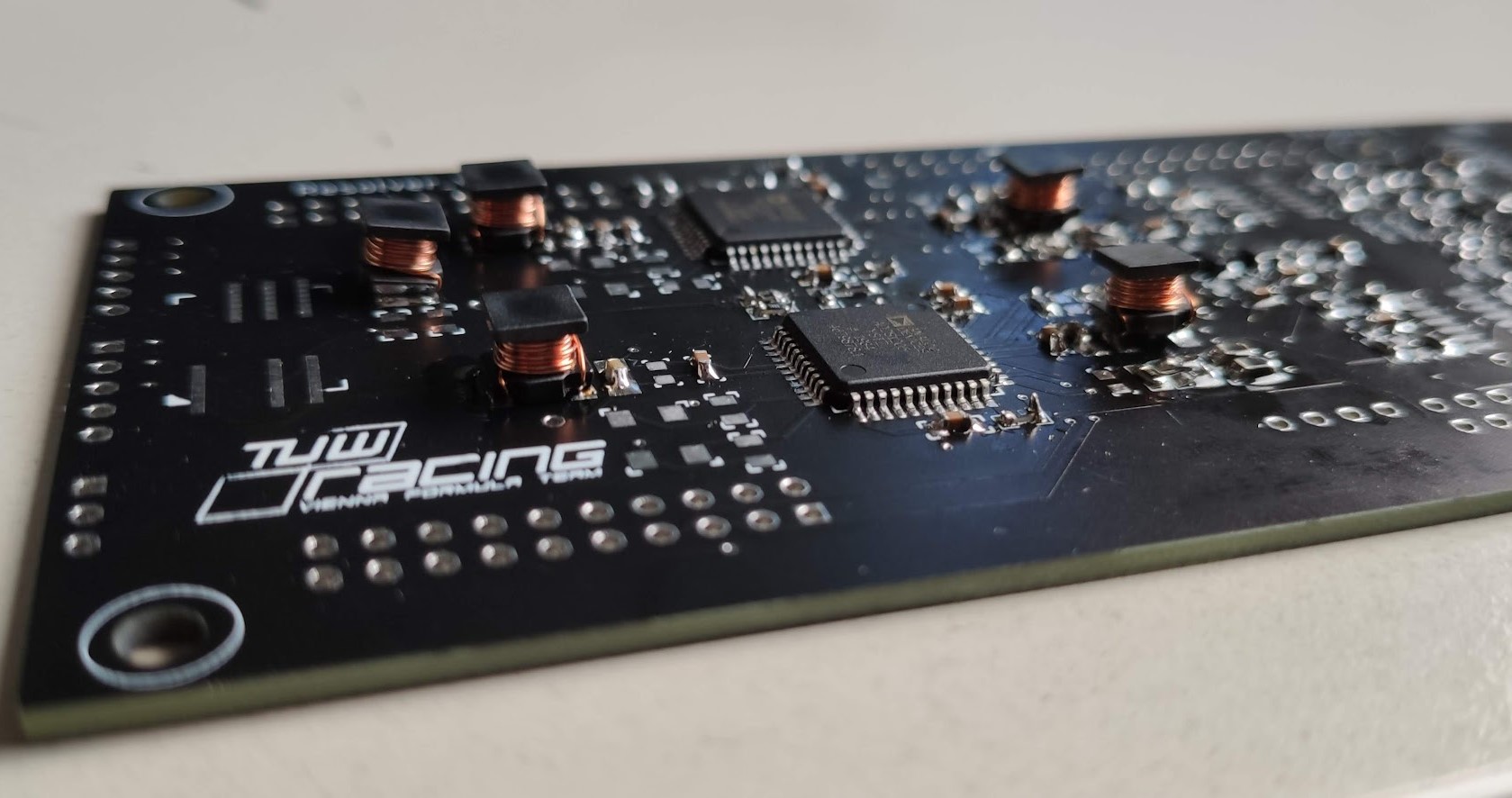Electrical Engineering Expertise
Hardware Engineering
From schematic capture to working prototypes - bringing electrical designs to life through systematic design, simulation, and validation.
Experience gained through TU Wien Racing team projects and lab work, focusing on real-world application and manufacturability.
PCB Design & Layout
Translating circuit concepts into manufacturable PCB layouts using industry-standard EDA tools. My approach focuses on signal integrity, power distribution, and design for manufacturability.
- KiCAD Proficiency: Schematic capture, component library management, multi-layer PCB layout, and Gerber file generation for production.
- Eagle/Fusion 360: Experience with Autodesk's integrated electronics design workflow, combining mechanical and electrical design.
- Signal Integrity: Understanding of trace routing, ground planes, via placement, and EMI considerations for reliable circuit operation.
- Design Rules & DFM: Implementing design rule checks, considering manufacturing constraints, and optimizing layouts for cost-effective production.
Tools I Use
KiCAD
Eagle/Fusion
LTspice
Oscilloscope
Circuit Simulation & Analysis
Validating circuit designs through comprehensive simulation before committing to hardware fabrication. This approach saves time and reduces costly design iterations.
- LTspice Analysis: Transient analysis, AC/DC sweeps, noise analysis, and Monte Carlo simulations for component tolerance evaluation.
- Model Validation: Using manufacturer SPICE models and creating custom behavioral models when needed for accurate simulation results.
- Performance Optimization: Iterative design refinement through parametric sweeps and worst-case analysis to ensure robust operation.
- Mixed-Signal Simulation: Combining analog and digital circuit elements to validate complete system behavior.
Prototyping & Testing
Bringing designs to life through hands-on assembly and validation. Through my time in the TU Wien Racing team I gained experience in designing, manufacturing and troubleshooting PCBs. There is a certain joy when soldering the PCBs, it feels so productive.
Key Skills
- Board Assembly: Experience with through-hole and surface-mount (SMD) soldering techniques for assembling prototypes.
- Testing & Debugging: Utilizing standard lab equipment (multimeters, oscilloscopes, logic analyzers) to test circuit functionality and troubleshoot issues.
- Iterative Design: Comfortable with the iterative process of testing, refining designs, and creating improved hardware versions.
- Documentation: Maintaining detailed test logs and design notes for reproducible results and future reference.
The hands-on experience from racing team projects has taught me the importance of robust design practices and thorough testing protocols in real-world applications.
